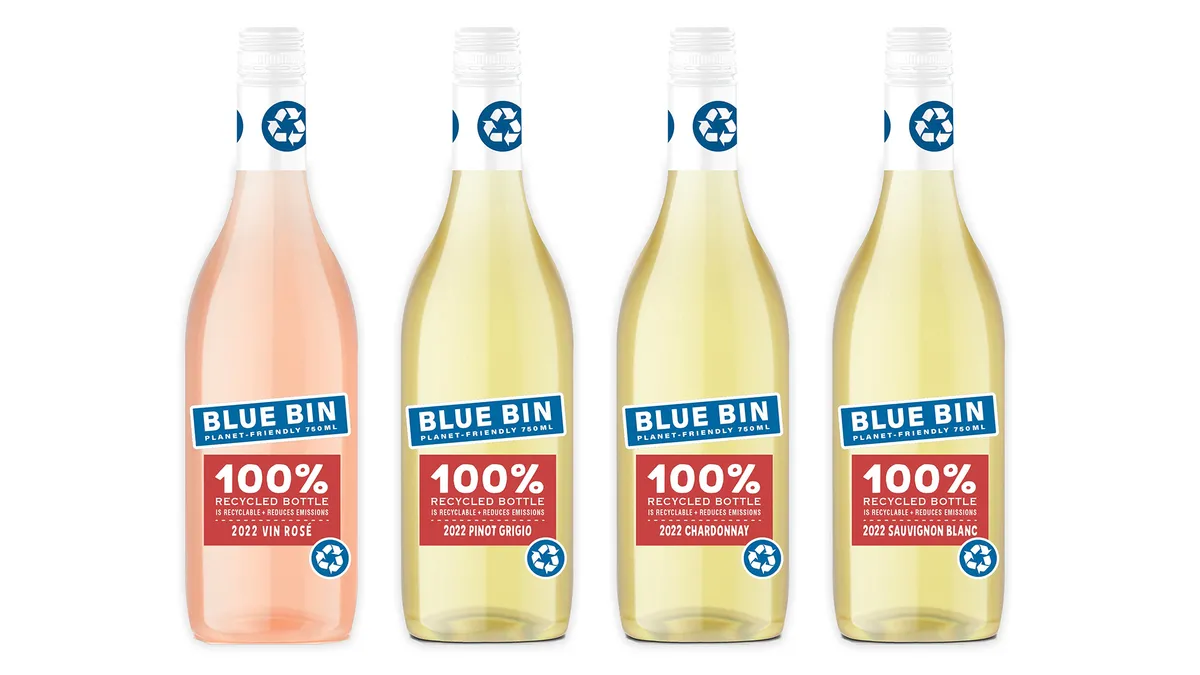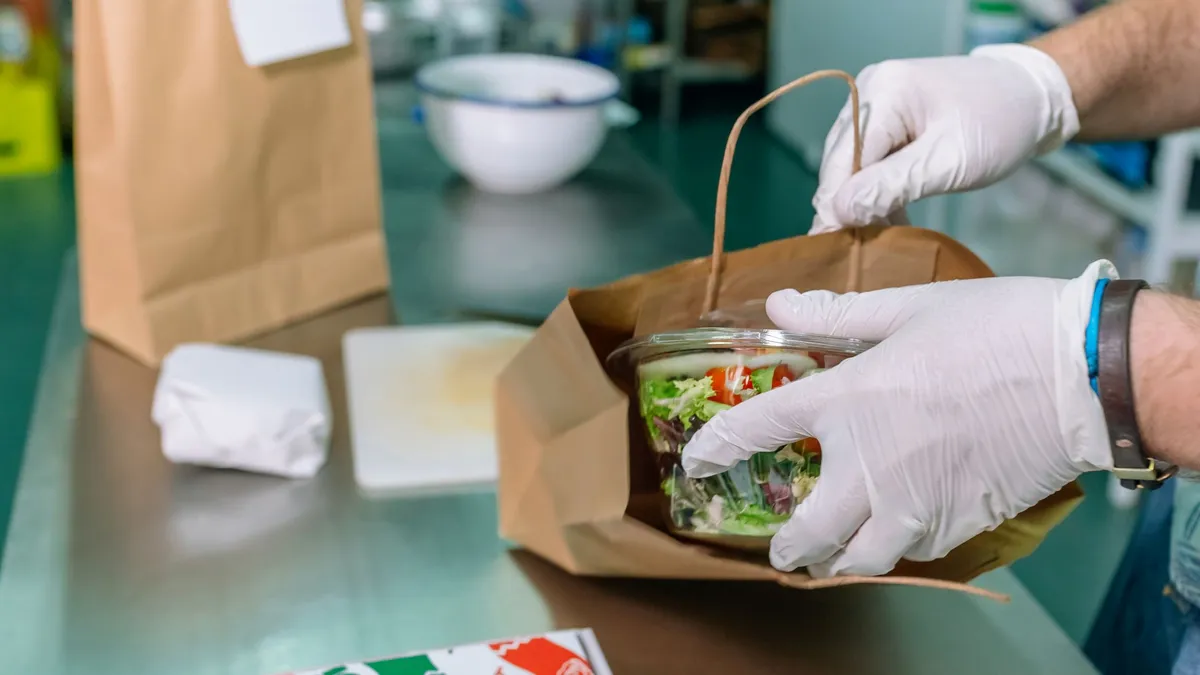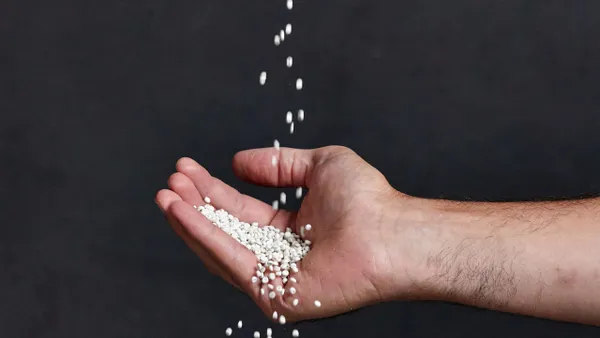Dive Brief:
- Amcor Rigid Packaging created a 100% recycled PET wine bottle for Ron Rubin Winery’s Blue Bin line that launched this month. The partners say this is the first 750-milliliter, or standard size, premium wine bottle made from 100% rPET to be released in the United States.
- The key reason the partners landed on this material is that “rPET has such a dramatically lower CO2 output in the production of the package versus glass,” according to Jonathan Jarman, marketing manager for Amcor’s spirits and wine group.
- While Amcor developed the initial 100% rPET bottle specifically for Ron Rubin and it bears the winery’s logo, the company also created a generic mold that it can use for other wine brands as well, Jarman said.
Dive Insight:
Beverage packaging manufacturers are working to create more sustainable options to meet their own decarbonization goals as well as brands’ commitments. Brands have to overcome perception hurdles when transitioning a container away from a substrate that many view as sustainable — glass — to one that is stigmatized — plastic, Jarman said. “But if you're making a point to go out of your way to use recycled content, I think it makes it more palatable to the average consumer.”
PET is significantly lighter than glass, allowing shippers to put more bottles onto a truck before reaching the weight limit. Lighter loads also are more efficient and result in less fuel consumption.
While glass lightweighting is a trend for wine bottle manufacturers to advance sustainability initiatives, switching substrates opens up new opportunities, according to Jarman.
“There's a lot of discussion around lightweighting glass for the reason of CO2 output reduction, but they’re going from like 500 grams to 380 grams. The PET bottle is 52 grams,” he said. “Our customers are definitely recognizing the benefits from a sustainability standpoint in the production of one material versus another.” Jarman added that this can help customers “unlock” ways to meet greenhouse gas emission reduction targets.
Amcor’s 2022 sustainability report included a new goal for 30% use of recycled materials across its portfolio by 2030. Currently, 74% of the packaging produced across the entire company is “recycle-ready” — designed to be recycled using current technologies, though infrastructure for collecting, sorting, and recycling may not yet be widely available — and it aims for all packaging to be recyclable, reusable or compostable by 2025. For Amcor Rigid Packaging specifically, 96% of the product portfolio by weight is considered recyclable “in practice and at scale.”
The company works with its customers on custom specifications and advises them on how to create a more sustainable, recyclable product, including for the new wine bottle, Jarman said.
Design also was paramount when creating the rPET bottle. Because the wine industry is rather traditional and typically sticks with variations on the same general bottle shape, “echoing that silhouette was critical,” Jarman said. “You see that shape from a distance and you know that's a wine bottle. You can’t confuse it with a soda bottle or a juice package.”
Amcor employs its Plasmax barrier in these wine bottles to improve shelf life. The technology is a microscopically thin layer of glass on the inside of the bottle that prevents oxygen from reaching the wine, considering glass is less permeable than plastic. Amcor has been using this type of barrier for about two decades on oxygen-sensitive products such as tomato sauce. The barrier doesn’t shatter and, according to Jarman, it doesn’t affect product recyclability because the glass layer is so thin.
Editor’s note: This article has been updated with data regarding the recyclability of products in the Amcor Rigid Packaging division.













